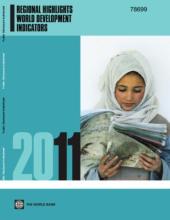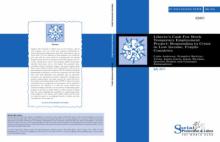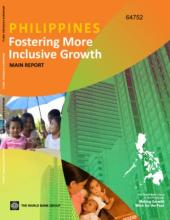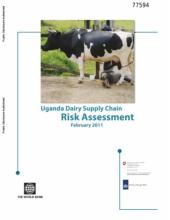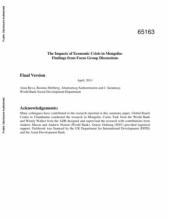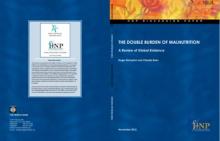/ library resources
Showing items 3088 through 3096 of 3148.Mongolia has very significant natural resources and a large part of the population is dependent on them for their daily living.
The primary completion rate for 7 countries-Benin, Burkina Faso, Guinea, Ethiopia, Madagascar, Mozambique, and Niger-more than doubled between 1991 and 2009. Still large differences persist between rich and poor within countries.
Together with reductions in indirect taxes on food imports, cash for work programs were one of the main responses implemented by African governments following the food, fuel, and financial crisis of recent years.
In this paper the author analyze the link between spatial agglomeration, spatial disparities and political governance with an emphasis on the Middle East and North Africa (MENA) region.
The main report is organized into three parts: part one provides the overall context by describing the level and evolution of poverty and inequality in the Philippines and by analyzing the factors that could be weakening the link between economic growth and poverty reduction.
Cattle are one of the main instruments for economic (e.g., milk, meat, and cattle sale) and social (e.g., marriage, death, dispute settlement, and gift giving) exchange in Uganda.
Mongolia was hit hard by the global economic recession, notably the fall in commodity prices. Gross Domestic Product (GDP) contracted by 1.6 percent in 2009 after growth of 8.9 percent in 2008.
The Double Burden of Malnutrition (DBM) is the coexistence of both under nutrition and over nutrition in the same population across the life course.
East Java is the second largest contributor to Indonesia's economy with a growth rate similar to national level and other major provinces in Java.
Pagination
Land Library Search
Through our robust search engine, you can search for any item of the over 73,000 highly curated resources in the Land Library.
If you would like to find an overview of what is possible, feel free to peruse the Search Guide.


